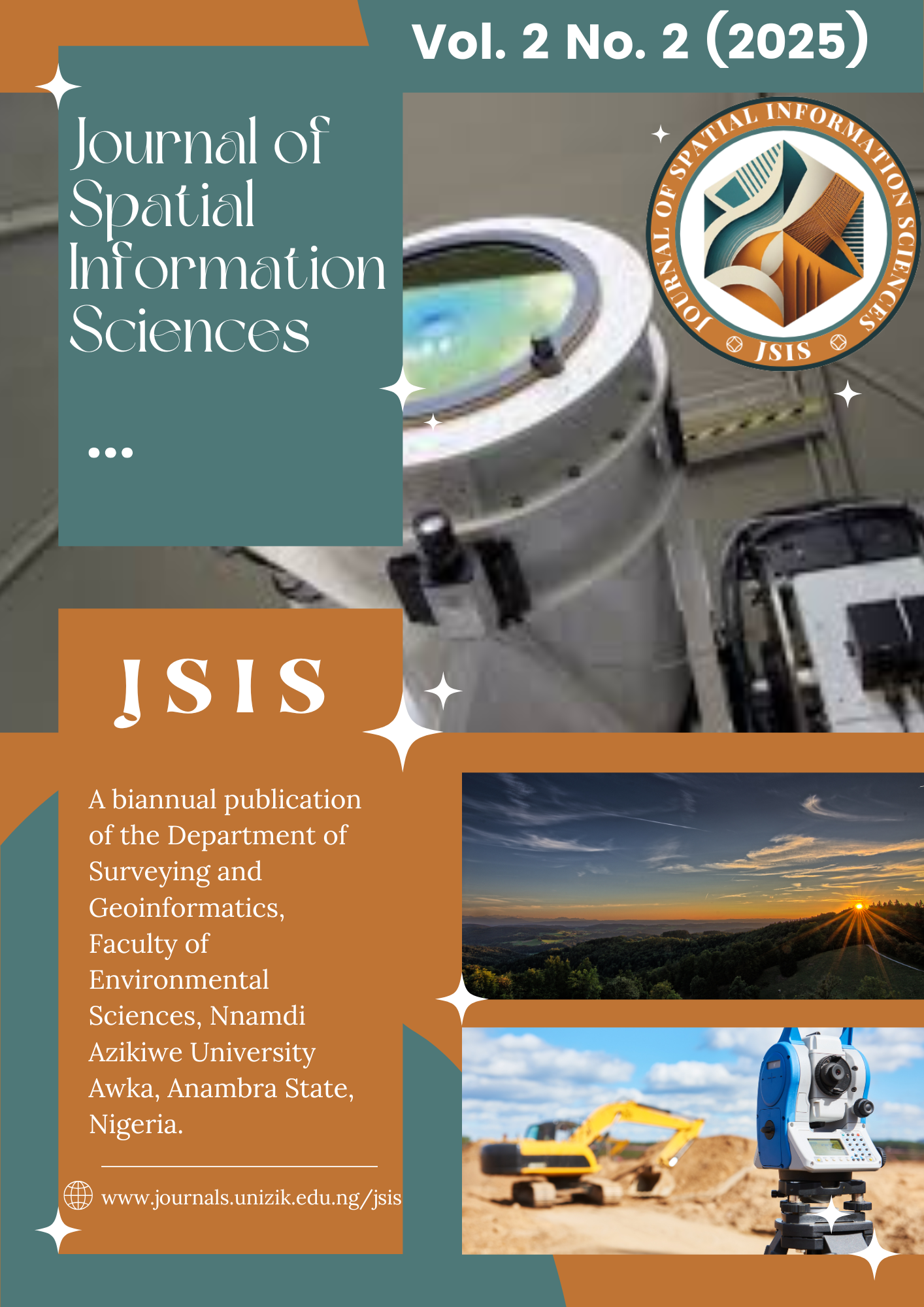Quantity Estimation of Underground Mass Deposit using Multi-Resolution Technique
DOI:
https://doi.org/10.5281/zenodo.15722690Keywords:
Gravity Anomaly Separation, Residual Gravity Anomalies, Multi-Resolution Analysis, Quantity Estimation, Underground Mass DepositAbstract
Multi-resolution analysis is a mathematical technique of analysing and interpreting discontinuities in transient signals. It is known for its efficiency in analysing gravity data. This study aims at computational estimation of the quantity of underground mineral deposit using multi-resolution technique with the objective of acquiring and processing the earth terrestrial gravimetric data using 2-Dimensional Wavelet Transform. The acquired data are gravity anomalies of points over an area of 64km2, sub-divided into square grids of 500m interval. These were analyzed using 2-Dimensional Discrete Wavelet Transform (2D-DWT). Also, they were decomposed and thresholded to separate the gravity anomalies into two components (regional and residual gravity anomalies). The Regional Residual Ratio (RRR) was estimated to be 52.6767dB with a Root Mean Square Error (RMSE) of 5.0074mgal. The quantity of the underground mineral deposit, as estimated using the Gauss' theorem and multi-resolution analysis, was found to be 2.0786792 x 107 tonnes. The statistical test carried out, on the results obtained, showed that there is no significant difference between the results obtained from the technique used in this study and the gold standard results obtained from the combined Least Square Collocation and Fourier analysis techniques which produced RMSE and RRR of 6.0072mgal and 19.33dB respectively at 95% confidence level. Therefore, it can be inferred that the Multi-Resolution analysis technique, with lower RMSE, has been found to have produced better estimate of the quantity of underground mineral deposit.
Downloads
Downloads
Published
Issue
Section
License

This work is licensed under a Creative Commons Attribution-ShareAlike 4.0 International License.





